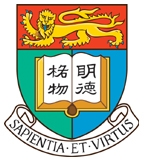Triads and organized crime
This course is not offered for study in the current academic year.
Course description
In Hong Kong, Triads are known to have been long involved in the illegal businesses of drugs, gambling, prostitution, loan sharking, debt collection and smuggling. Triads are also notorious for organized extortion from legitimate businesses, such as the entertainment industry, street hawking, wholesale markets, minibus services, interior decoration business, the trading of properties, and the film industry. Since Hong Kong Triads are believed to be increasingly active in drug trafficking, human smuggling, and economic organized crime such as credit card fraud, counterfeiting, and money laundering, Western police foresee that Hong Kong Triads are replacing the Italian Mafia as the most powerful criminal organization in the world in this century. Are these contentions correct? In order to understand how Triads are exactly involved in different kinds of organized crime, this course will firstly analyze the role of Hong Kong Triads in legal, illegal, and international markets.
Since Hong Kong reverted from British to Chinese rule in 1997, the departure of Hong Kong-based crime groups for the mainland is a rational response to the impact of law-enforcement, socioeconomic and political changes. This course will therefore discuss the movement of triad societies from Hong Kong to mainland China and examine the role of triads in China’s newly established criminal underworld. Finally, this course will offer a comprehensive understanding of mainland Chinese organized crime by introducing the history of organized crime and examining the dangerous collusion between police and underworld gangs. These chosen topics will enhance students’ understanding of organized crime and its control in Hong Kong and mainland China.
Course learning outcomes
- gain a thorough understanding of sociological perspectives on triads and organized crime
- critically evaluate certain taken for granted views concerning triads and organized crime
- develop a detailed knowledge about recent developments of triads and organized crime
Assessment
| Tasks | Weighting |
|---|---|
| Tutorial participation | 10% |
| Individual paper | 40% |
| Examination | 50% |
Required reading
- Chu, Y.K. (2000), The Triads as Business. London and New York: Routledge.
- Wang, P. (2017). The Chinese mafia. Oxford University Press.
- Wang, P., & Kwok, S. (2022) “Hong Kong Triads: The Historical and Political Evolution of Urban Criminal Polity”, Urban History, DOI: https://doi.org/10.1017/S0963926821001024.
Recommended reading
- Antonopoulos, G. A., & Papanicolaou, G. (2018). Organized crime: a very short introduction. Oxford University Press.
- Broadhurst, R., & Lee, K. W. (2009). ‘The transformation of triad ‘dark societies’ in Hong Kong: The impact of law enforcement, socio-economic and political change’. Security Challenges, 5(4), 1-38.
- Chu, Y. K. (2005). ‘Hong Kong triads after 1997’. Trends in Organized Crime, 8(3), 5-12.
- Kwok, S. I., & Lo, T. W. (2013). ‘Anti-triad legislations in Hong Kong: issues, problems and development’. Trends in Organized Crime, 16(1), 74-94.
- Lo, T. W., & Kwok, S. I. (2012). ‘Traditional Organized Crime in the Modern World: How Triad Societies Respond to Socioeconomic Change’. In Dina Siegel, Henk van de Bunt eds. Traditional Organized Crime in the Modern World, pp. 67-89.
- Lo, T. W. (2010). ‘Beyond social capital: triad organized crime in Hong Kong and China’. British Journal of Criminology, 50(5), 851-872.
- Lo, T. W. (2012). ‘Triadization of youth gangs in Hong Kong’. British Journal of Criminology, 52(3), 556-576.
- Lo, T. W., Kwok, S. I., & Garrett, D. (2021). ‘Securitizing the Colour Revolution: Assessing the Political Role of Triads in Hong Kong’s Umbrella Movement’. The British Journal of Criminology. 61(6), 1521-1539.
- Lo, T. W., & Kwok, S. I. (2017). ‘Triad organized crime in Macau casinos: Extra-legal governance and entrepreneurship’. British journal of Criminology, 57(3), 589-607.
- Varese, F. (2011). Mafias on the move: How organized crime conquers new territories. Princeton University Press.
- Wang, P. (2013). ‘The Increasing Threat of Chinese Organised Crime: National, Regional and International Perspectives’. The RUSI Journal, 158(4), 6-18.
- Wang, P. (2013). ‘The rise of the Red Mafia in China: a case study of organised crime and corruption in Chongqing’. Trends in Organized Crime, 16(1), 49-73.
- Wang, P. (2020). ‘Politics of crime control: How campaign-style law enforcement sustains authoritarian rule in China’. The British Journal of Criminology, 60(2), 422-443.
- Wang, P., Su, M., & Wang, J. (2021). ‘Organized crime in cyberspace: How traditional organized criminal groups exploit the online peer-to-peer lending market in China’. The British Journal of Criminology, 61(2), 303-324.
- Zhang, S., & Chin, K. L. (2003). ‘The declining significance of triad societies in transnational illegal activities. A structural deficiency perspective’. British Journal of Criminology, 43(3), 469-488.
 The University of Hong Kong
The University of Hong Kong